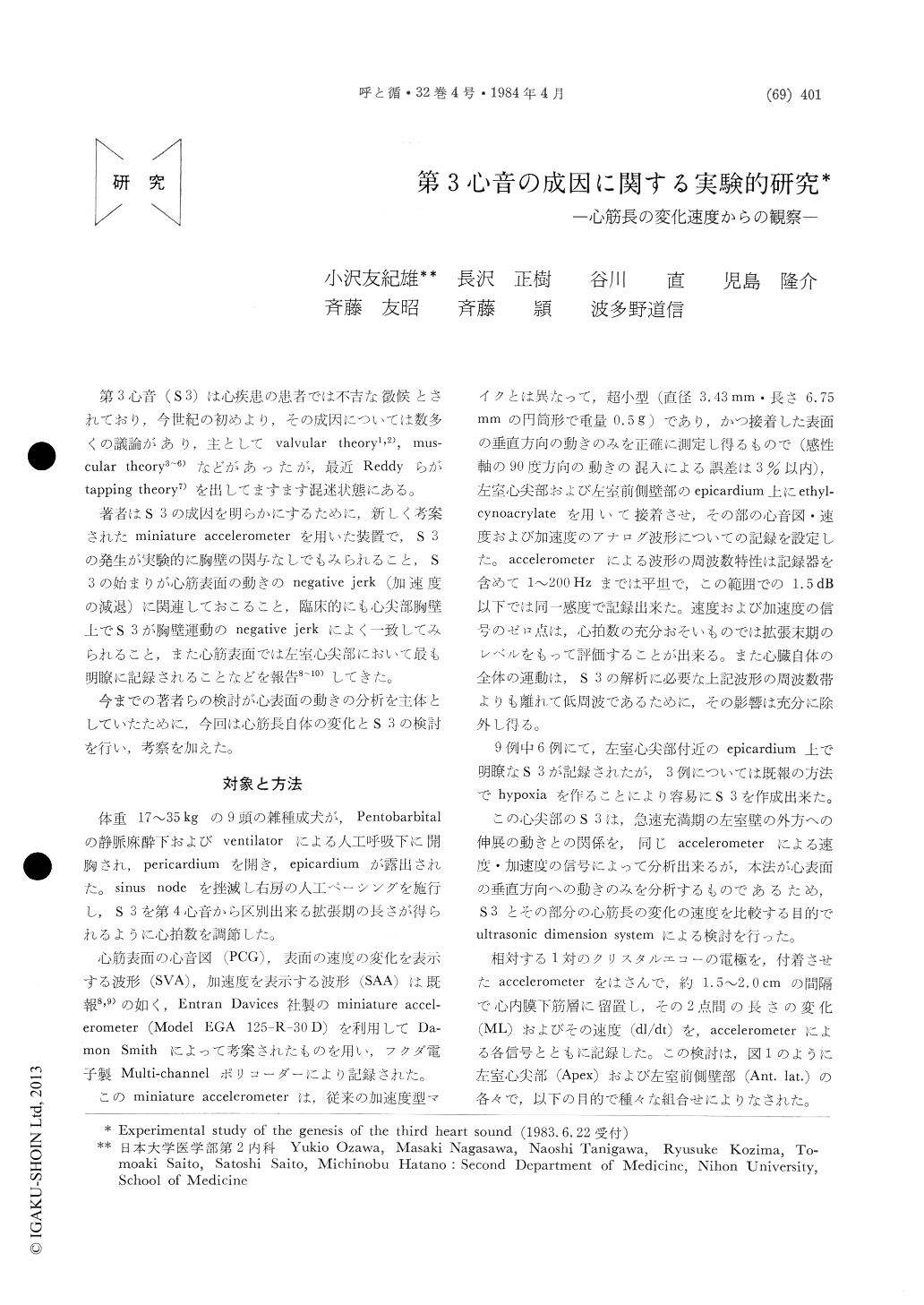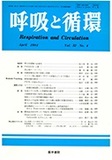Japanese
English
- 有料閲覧
- Abstract 文献概要
- 1ページ目 Look Inside
第3心音(S3)は心疾患の患者では不吉な徴候とされており,今世紀の初めより,その成因については数多くの議論があり,主としてvalvular theory1,2),mus—cular theory3〜6)などがあったが,最近Reddyらがtapping theory7)を出してますます混迷状態にある。
著者はS3の成因を明らかにするために,新しく考案されたminiature accelerometerを用いた装置で,S3の発生が実験的に胸壁の関与なしでもみられること,S3の始まりが心筋表面の動きのnegative jerk (加速度の減退)に関連しておこること,臨床的にも心尖部胸壁上でS3が胸壁運動のnegative jerkによく一致してみられること,また心筋表面では左室心尖部において最も明瞭に記録されることなどを報告8〜10)してきた。
We studied 9 open chest anesthetized dogs in which a third heart sound (S3) was found on epi-cardium at the left ventricular apex, or repeatedly induced by hypoxemia due to stopping the ven-tilator. In all dogs, miniature accelerometers were applied on epicardium at apex and over left ven-tricular anterolateral wall. Ultrasonic dimension gauges were placed in the subendocardium at samelocations. Recordings were made at apex and anterolateral wall of : surface velocity and acceler-ation, and S3 phono, as well as the velocity and ac-celeration of myocardial length changes.
Results : There was an excellent correlation of peak surface velocity (derived from the accelerome-ter signal) and the peak velocity of myocardial length change (r=0.94). These parameters increas-ed in parallel fashion during S3 production induced by oxgen deprivation. The beginning of S3 was synchronous with the onset of negative jerk of the LV surface motion and myocardial length changes at the cardiac apex. Analogous movements at the anterolateral area preceded S3. We conclude that S3 results from a sudden intrinsic limitation of LV wall expansion at the cardiac apex.

Copyright © 1984, Igaku-Shoin Ltd. All rights reserved.


